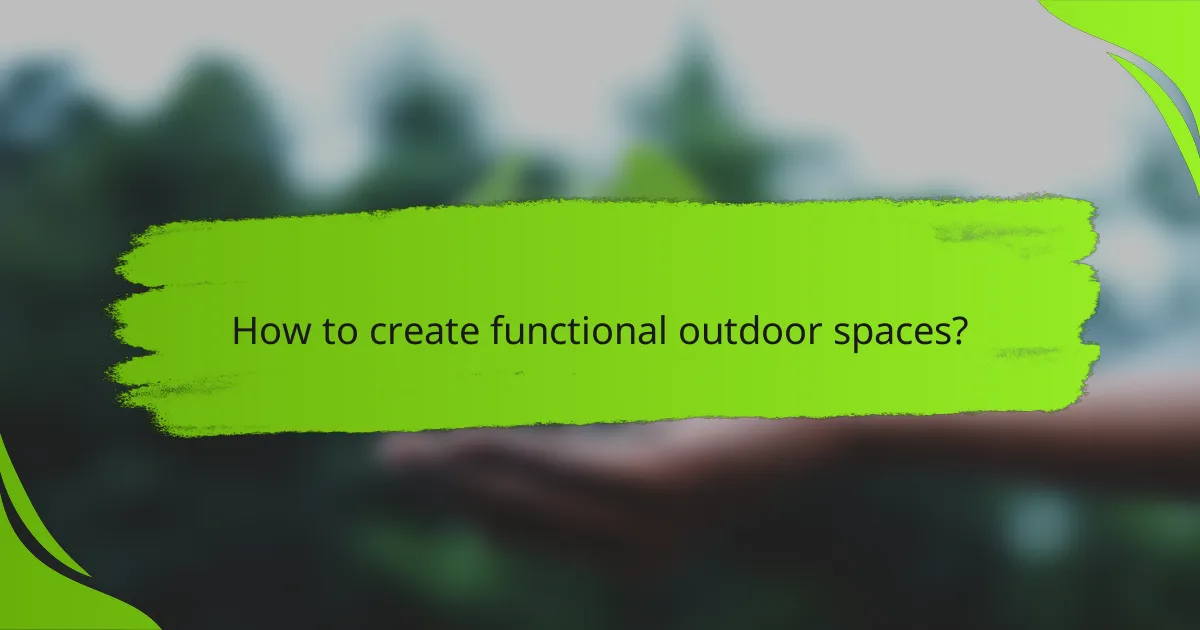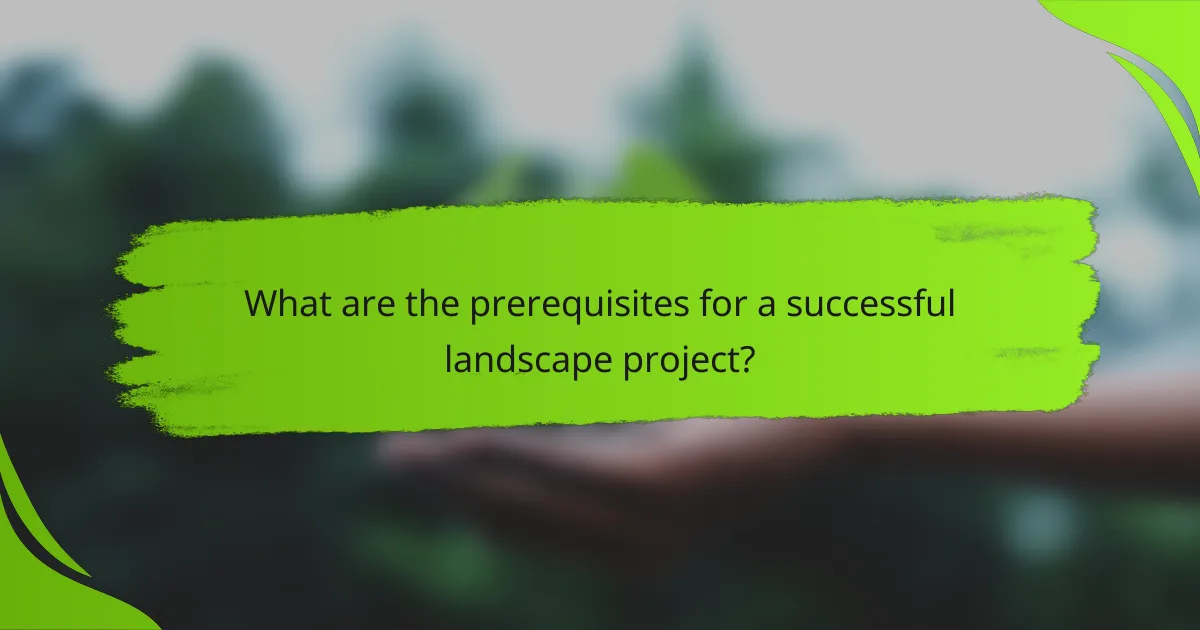A landscape overhaul can transform your outdoor spaces, significantly boosting your property’s value and appeal. By incorporating elements such as native plants, water features, and well-planned living areas, you can create a visually stunning environment that enhances both functionality and marketability.

How can landscape overhaul enhance property value in Australia?
A landscape overhaul can significantly enhance property value in Australia by improving aesthetic appeal and functionality. Well-designed outdoor spaces not only attract potential buyers but also create a welcoming environment that can lead to higher market prices.
Increased curb appeal
Increased curb appeal is one of the most immediate benefits of a landscape overhaul. A well-maintained garden, attractive pathways, and vibrant plants can create a positive first impression for visitors and potential buyers alike. Simple changes, like fresh mulch or seasonal flowers, can dramatically enhance the look of your property.
Consider investing in native Australian plants that thrive in local climates, as they require less maintenance and water. This not only boosts curb appeal but also promotes sustainability.
Higher resale prices
Properties with appealing landscapes often command higher resale prices. A well-planned garden can increase a home’s value by a noticeable percentage, sometimes ranging from 10% to 20%. Buyers are willing to pay more for homes that offer functional outdoor spaces, such as patios, decks, or landscaped gardens.
To maximize resale potential, focus on creating defined outdoor areas that serve specific purposes, like entertaining or relaxation. This can make your property more attractive in a competitive market.
Attracting buyers
Attracting buyers is crucial in a competitive real estate market, and an appealing landscape can be a key differentiator. Homes with inviting outdoor spaces often attract more interest during open houses and viewings. Features like outdoor lighting, seating areas, and well-kept lawns can draw buyers in and encourage them to envision their future in the home.
Utilizing social media and online listings to showcase your property’s landscape can further enhance visibility. High-quality photos highlighting your outdoor spaces can capture the attention of potential buyers and lead to quicker sales.

What are the best landscaping solutions for outdoor beauty?
The best landscaping solutions for enhancing outdoor beauty focus on creating visually appealing and functional spaces. Incorporating native plants, water features, and outdoor lighting can significantly elevate the aesthetic and value of your property.
Native Australian plants
Using native Australian plants is an effective way to enhance outdoor beauty while promoting local biodiversity. These plants are well-adapted to the climate and soil conditions, requiring less water and maintenance compared to non-native species.
Consider incorporating species like kangaroo paw, grevillea, and bottlebrush, which offer vibrant colors and attract local wildlife. When planning your landscape, aim for a mix of heights and textures to create visual interest.
Water features
Water features, such as ponds, fountains, or waterfalls, can add a serene element to your outdoor space. They not only enhance beauty but also create a soothing atmosphere with the sound of flowing water.
When selecting a water feature, consider the size of your yard and the maintenance involved. Small fountains can be ideal for compact spaces, while larger ponds may require more planning and upkeep. Ensure proper filtration and water circulation to keep the feature clean and inviting.
Outdoor lighting
Outdoor lighting is essential for showcasing your landscape after dark and improving safety. Strategically placed lights can highlight pathways, trees, and water features, creating an enchanting ambiance.
When installing outdoor lighting, opt for energy-efficient LED fixtures and consider solar-powered options for easy installation. Focus on key areas such as entryways and seating areas, and avoid overly bright lights that can disrupt the natural nighttime environment.

How to create functional outdoor spaces?
Creating functional outdoor spaces involves designing areas that enhance usability and aesthetic appeal while increasing property value. Focus on integrating living areas, pathways, and gardens that serve specific purposes and cater to your lifestyle.
Designing outdoor living areas
Outdoor living areas should be tailored to your needs, whether for relaxation, dining, or entertaining. Consider elements like seating arrangements, fire pits, and outdoor kitchens that facilitate social interactions and comfort.
When planning these spaces, think about the layout and flow. Use furniture that withstands weather conditions and complements your home’s style. Aim for a balance between open space and defined areas to create a welcoming environment.
Incorporating pathways
Pathways are essential for guiding movement through your outdoor spaces. They should connect different areas, such as gardens, patios, and entrances, while being functional and visually appealing. Materials like stone, gravel, or pavers can enhance the aesthetic and durability.
Ensure pathways are wide enough for easy navigation, typically around 1 meter. Consider adding lighting for safety and ambiance, especially in areas that may be used at night.
Building functional gardens
Functional gardens can serve various purposes, from growing vegetables to creating serene spaces for relaxation. Choose plants that thrive in your local climate and soil conditions, and consider incorporating raised beds for easier maintenance.
Design your garden layout to include pathways for accessibility and to prevent soil compaction. Incorporate features like seating areas or decorative elements to enhance the overall experience and encourage outdoor enjoyment.

What are the costs associated with landscape overhaul?
The costs associated with a landscape overhaul can vary widely based on the scope of the project, materials used, and labor involved. Homeowners should anticipate spending anywhere from a few thousand to tens of thousands of dollars, depending on their specific goals and the complexity of the design.
Average landscaping costs in Australia
In Australia, average landscaping costs typically range from AUD 50 to AUD 150 per square meter, depending on the type of work being done. For a complete overhaul, homeowners might spend between AUD 5,000 and AUD 20,000 or more, depending on the size of the property and desired features.
Factors influencing these costs include the choice of plants, hardscaping materials, and whether professional services are employed. DIY projects can help reduce expenses but may require significant time and effort.
Cost breakdown by project type
Different landscaping projects come with varying costs. For instance, basic lawn installation may cost around AUD 1,000 to AUD 3,000, while more elaborate designs involving patios, pathways, and retaining walls can range from AUD 5,000 to AUD 15,000.
Other common projects include garden beds, which can cost between AUD 500 and AUD 2,000, and irrigation systems, typically priced around AUD 1,500 to AUD 5,000. Understanding these ranges can help homeowners budget effectively for their landscape overhaul.
Financing options for landscaping
Homeowners looking to finance their landscape overhaul have several options. Personal loans, home equity lines of credit, and credit cards are common methods for funding these projects. Interest rates and terms can vary significantly, so it’s crucial to compare offers.
Additionally, some landscaping companies may offer financing plans or payment plans that allow homeowners to spread costs over time. Always read the fine print and consider the total cost of financing before committing to any option.

What are the prerequisites for a successful landscape project?
A successful landscape project requires careful planning and assessment of the site and budget. Understanding these prerequisites helps ensure that the final design meets both aesthetic and functional goals while enhancing property value.
Site assessment
Conducting a thorough site assessment is crucial for any landscape project. This involves evaluating the existing conditions, including soil quality, drainage patterns, sunlight exposure, and existing vegetation. Identifying these factors will guide the selection of appropriate plants and materials.
Consider potential challenges such as slopes, shaded areas, or poor soil, which may require specific solutions like terracing or soil amendments. Documenting these elements can help create a more tailored and effective landscape design.
Budget planning
Budget planning is essential to ensure that the landscape project remains financially viable. Start by determining the overall budget, including costs for materials, labor, and maintenance. A typical range for residential landscaping can vary significantly, often falling between a few thousand to tens of thousands of dollars, depending on the scope of the project.
Break down the budget into categories such as hardscaping, planting, and irrigation. This allows for better tracking of expenses and helps prioritize elements that provide the most value. Be sure to include a contingency fund of around 10-20% to cover unexpected costs that may arise during the project.
